NPSO 2017 Annual Meeting
Field Trips
IN THE LAND OF UMPQUA
Bring water and lunch, sturdy shoes, sunglasses and be prepared for any weather. Hikes may be changed if necessary.
Departure Locations
Friday field trips depart from the Douglas County Library (map).
Saturday and Sunday depart from the Phoenix School Parking Lot (map).
SATURDAY, JUNE 10th
1. Beatty Creek ACEC/RNA
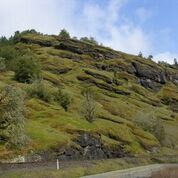
This area represents an excellent example of serpentine pine savanna at the north end of the Klamath Mountains Ecoregion. Soils derived from serpentine rock have chemical and physical properties that make plant growth difficult. This area has been recognized for its rich concentration of plants tolerant of these harsh soils. Species to be found on the serpentine rocks here include Bolander’s onion (Allium bolanderi), Klamath rockcress (Arabis subpinnatifida), Douglas monkey flower (Diplacus douglasii), and California sandwort (Minuartia californica). Other wildflowers to enjoy include grass widows (Olsynium douglasii var. douglasii), wayside aster (Eucephalus vialis), spring gold (Crocidium multicaule), yellowleaf iris (Iris chrysophylla), and Henderson’s triteleia (Triteleia hendersonii var. hendersonii). Moderate off-trail hiking. Forty-five minute drive from Roseburg. Leader: Ken Carloni, Umpqua Community College biology professor.
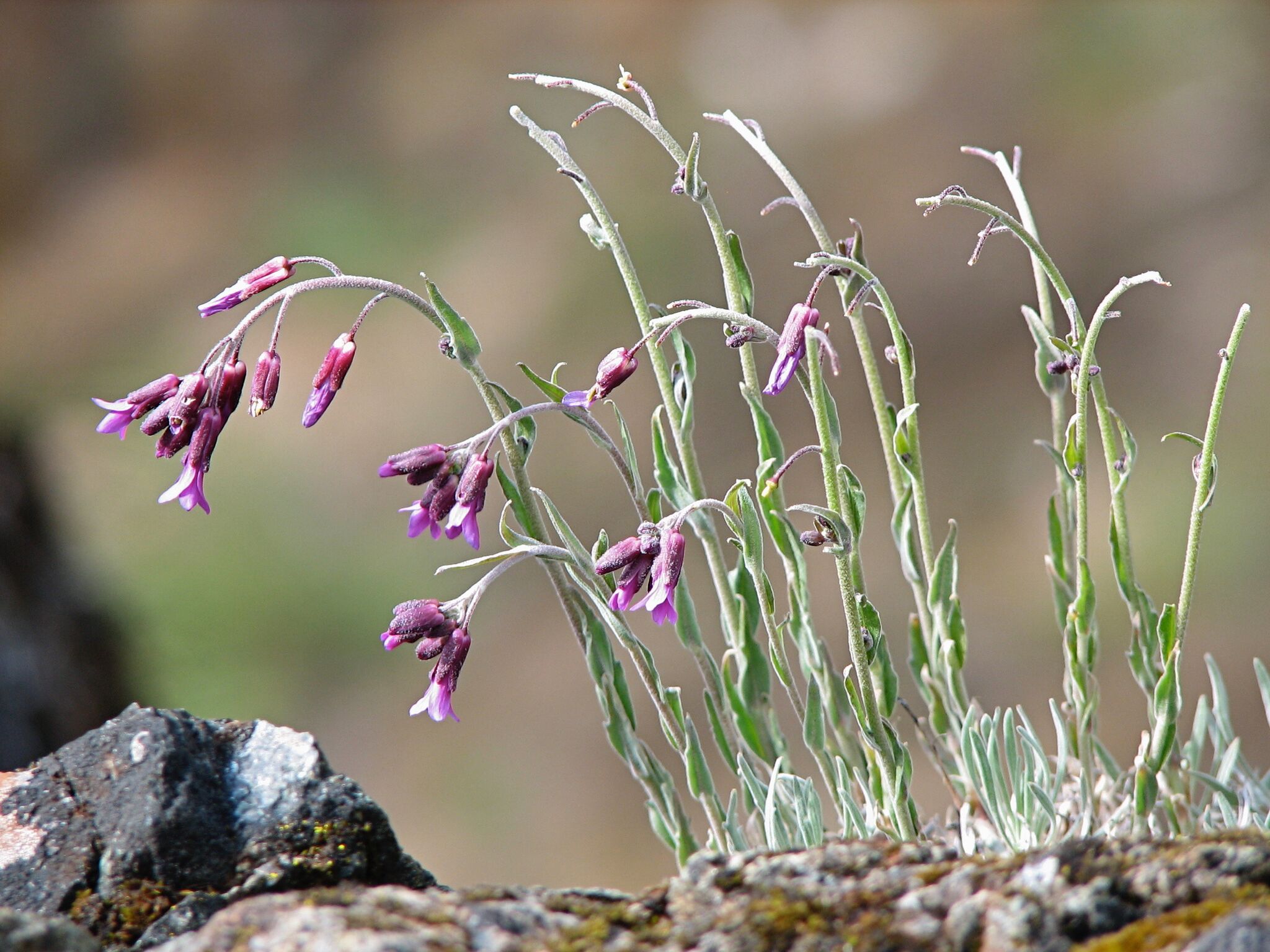 Arabis subpinnatifida by Joyce Eberhart
Arabis subpinnatifida by Joyce Eberhart
2. Bilger Ridge
We will enjoy many interesting serpentine plants such as Calochortus coxii (crinite mariposa lily, named for Marvin Cox who was one of the leaders of this trip in 2005) and Sisyrinchium hitchcockii (Hitchcock’s blue-eyed grass). We may also have time to visit an Umpqua mariposa lily (Calochortus umpquaensis) site near Tiller. Easy-to-moderate off-trail hiking. 1-1/4 hour drive from Roseburg. Leader: Aaron Roe, botanist with the Roseburg BLM office.

3. Callahan Ridge
This is a visit to the expansive meadow on Callahan Ridge to view a diverse variety of “serpentine” endemic plant and fern species that include the Umpqua mariposa lily (Calochortus umpquaensis) and Hall’s violet (Viola hallii). Kincaid’s lupine (Lupinus oreganus ssp. kincaidii) is also present in a low narrow saddle underlain by “granitic” substrate. See panoramic views of the Western Cascade Range to the east and the Klamath Mountains in every other direction. Easy-to-moderate hiking. 1-1/2 hour drive from Roseburg. Leader: Linda Vorobik
4. Cedar Springs Mountain
We will wander among amazing serpentine plants and geologic features while hunting for the northernmost range of the elusive Lewisia leana (quill-leaved lewisia). We’ll also look for Phacelia peckii (Peck’s phacelia) and Arabis subpinnatifida (Klamath rockcress). A two- hour drive from Roseburg, high clearance recommended. Moderate to difficult hike, bring plenty of water. Leader: Dana York, former USFS botanist.
5. Cougar Bluffs
Forest wildflowers such as Phlox adsurgens (woodland phlox) and stunning rock garden species such as Gilia capitata (bluefield gilia), Penstemon cardwellii (Cardwell’s penstemon), Penstemon rupicola (pink rock penstemon), Sedum divergens (spreading stonecrop) and Sedum oregonense (creamy stonecrop) are sure to please. Easy-to-moderate hiking. 1-1/2 hours from Roseburg, high clearance recommended. Leader: Richard Helliwell, USFS botanist.
6. Fall Creek Falls
This hike will look at typical lichens, mosses, and plants of the western Cascades. This field trip will focus on lichens and bryophytes and will likely visit other sites in the area. Susan Creek is a nearby BLM park featuring Tioga Bridge spanning the scenic North Umpqua River, accessing the North Umpqua Trail system on the opposite bank. The rock outcrops along the river's edge hold a variety of aquatic lichens and bryophytes including the rare "donut moss" Scouleria marginata. The trail system goes through beautiful old-growth forest containing many trees well over six feet in diameter. Short easy hiking. 45-minute drive from Roseburg. Leader: Scot Loring
7. Hemlock Lake
Enjoy a scenic short hike around Hemlock Lake and see a great variety of flora such as Eurybia radulina (formerly Aster radulinus, rough-leaved aster), Penstemon cardwellii (Cardwell’s penstemon), and Castilleja pruinosa (frosted Indian paintbrush). Also includes stops of botanical interest on the way along Little River Rd. 1-1/2 hour drive from Roseburg. Moderate hiking. Leader: Kelly Amsbury, ODA botanist (retired).
8. King Mountian Rock Garden ACEC
King Mountain Rock Garden is a wonderland of stunning small rock garden type plants that are able to make a niche in seemingly inhospitable, rocky habitat. We’ll look for Penstemon anguineus (Siskiyou beardtongue), P. azureus (blue beardtongue), P. rupicola (rock penstemon), Viola hallii, V. nuttallii, Phlox diffusa (spreading phlox), P. adsurgens (woodland phlox), Silene hookeri (Hooker’s pink), and S. lemmonii. Easy-to-moderate hiking. 1-3/4 hours from Roseburg, high clearance recommended. Leader: Chris Rush, USFS botanist (retired).
9. Limpy Rock RNA, Steamboat Falls, and Apple Creek CG
Participants will be treated to an excellent tour of the Ragged Ridge-Dry Creek Loop to learn about mycotrophic plants and see unusual and endemic flora such as Kalmiopsis fragrans (fragrant kalmiopsis), Asplenium septentrionale (grass fern), and Sarcodes sanguinea (snow plant). Moderate. Wear high-topped boots for scrambling off-trail on rocky slopes at 4000'. 1-1/2 hour drive from Roseburg, high clearance recommended. Leader: Dan Luoma.
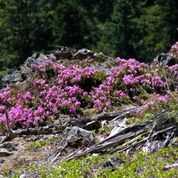
10. Lookout Mt.
Hikes to great viewpoints like the open summit of Lookout Mountain don’t come much easier than this. A rainbow of colorful flowers decorates the gravelly top and cliffs along the edge and attracts butterflies on sunny summer days. A small creek by the bottom of the spur road and other roadside open areas nearby provide plenty of unusual plants as well. There’s balsamroot, Phacelia verna (spring phacelia), lots of Fritillaria glauca (Siskiyou missionbells), and a grand show of annuals and bulbs (text courtesy of Tanya Harvey). Moderate hiking. 1-1/2 hour drive from Roseburg, Leader: Bruce Waugh.
11. North Bank Habitat Management Area (BLM) and Popcorn Swale Preserve (TNC)
First we’ll visit the Popcornswale Preserve near Wilbur in North Douglas County and then drive to the North Bank Habitat Management Area. We’ll look for Plagiobothrys hirtus (rough popcornflower) at two wet meadow prairies in Oak woodlands, also Sidalcea cusickii (Cusick’s checkermallow), Limnanthes douglasii (Douglas meadowfoam), and unique prairie grasses and graminoids. Easy hikes (with water resistant boots). 15-30 minute drive from Roseburg. Leader: Susan Carter, botanist with the Roseburg BLM office.
12. Tahkenitch Dunes - Threemile Lake
This is our only coastal field trip. See estuaries, deflation plains, beach dune plants, tideland and forest flora in the Coast Ecological Province. Plants such as Phyllospadix torreyi (Torrey's surfgrass), Zostera marina (marine eel “grass”), Lathyrus littoralis (silky beach pea), and Abronia latifolia (yellow sand-verbena) may be encountered. The last two wildflowers are not recorded from the area on the Oregon Plant Atlas, so finding them would help better document their distribution. Bring binoculars to scout for Sidalcea hendersonii (Henderson’s checker mallow) while crossing the Umpqua River estuary. On the return trip, a stop will be made at the Elkton Community Education Center, time permitting. About 1-1/2 hr. drive from Roseburg. Easy to moderate hiking. Leader: Marty Stein, USFS botanist.
13. Twin Lakes
The area is one of the jewels of the North Umpqua and it is worth seeing the stunning clear blue lakes and giant old growth trees regardless of the bloom. Boykinia major (large boykinia), Eriogonum umbellatum (sulphur buckwheat), Leptosiphon nuttallii (Nuttall’s linanthus), and Piperia unalascensis (Alaska rein orchid) are among the great diversity of wildflowers to be seen there (description courtesy of Tanya Harvey). About an hour drive from Roseburg. Three to four miles of hiking, easy to moderate. Leader: Sam Friedman, USFWS botanist.
14. Pyramid Rock
Pyramid Rock is one of a number of large rocks that pop out of the otherwise largely forested Western Cascades. It has one of the few populations of Columbia lewisia (Lewisia columbiana) south of the Columbia Gorge. Other rock garden plants include cliff paintbrush (Castilleja rupicola), spring phacelia (Phacelia verna), cliff penstemon (Penstemon rupicola), and Sierra cliffbrake (Pellaea brachyptera). About a two-hour drive from Roseburg, high clearance required. Easy to moderate short hike. Leader: Tanya Harvey.
15. Roseburg area habitats
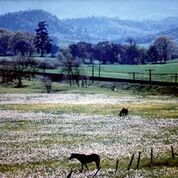
Explore the Umpqua's lowland valley and oak savannah flora in near-by areas with our local chapter's student of medicinal botanicals. Look for elegant calicoflower (Downingia elegans), tiger lilies (Lilium columbianum), larkspurs (Delphinium species), and rough popcornflower (Plagiobothrys hirtus). The Veteran’s Administration oak savannah will be a major stop. A trip to the herbarium at the Douglas County Museum of History and Natural History may be included. (Easy). Leader: Rod Trotter.
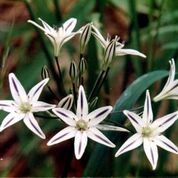
16. Wolf Creek Falls (Fri./Sun. only)
Nestled among the big trees in an old-growth forest, this 1.2 mile trail leads to a cascading two-tier waterfall that plummets 75 feet into a pool. A variety of open rock face (i.e. Delphinium menziesii, Mimulus guttatus) and forest growing flowers (i.e. Maianthemum stellatum, Prosartes hookeri) are to be seen. About a 45 min. drive from Roseburg, easy to moderate short hike. Leader TBA.
